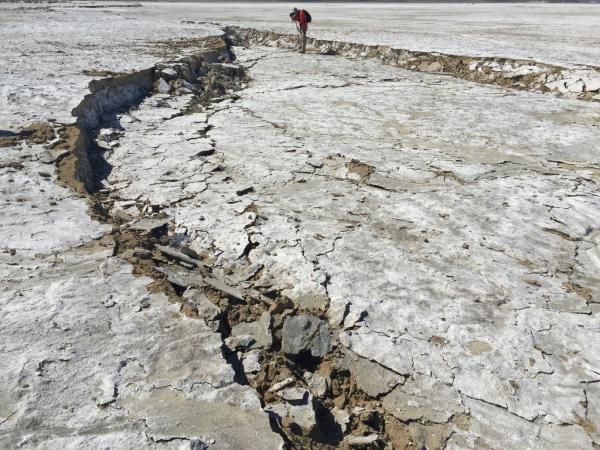The geologic fingerprint of multi-fault earthquakes in southern California
Alba Rodríguez Padilla
University of California, Davis

- Date & Time
- Location
- Yosemite Room, Bldg. 19, Moffett & Microsoft Teams
- Host
- Chad Trexler
- Summary
The past vicennial has witnessed four multi-fault, surface rupturing earthquakes in the Eastern California Shear Zone that left behind impressive footprints of widespread deformation in the desert. Inelastic processes from earthquakes contribute to the formation of fault damage zones that constitute a permanent sink of strain energy, modify the elastic properties of the shallow crust and amplify near-field ground shaking. Constraints on the extent of inelastic deformation differ depending on the dataset and methodology used. We combine fracture, strain, and aftershock maps from the Ridgecrest events, and fracture maps from the Landers, Hector Mine, and El Mayor Cucapah earthquakes to reconcile the properties of damage zones across different spatial scales and resolutions. Our observations reveal how macroscopic fracturing generates intense near-fault damage and that widespread damage accrues regionally over multiple earthquake cycles. To the east, the San Andreas and the San Jacinto faults come together in a releasing step-over at Cajon Pass, north of Los Angeles, where the record of multi-fault earthquakes through this junction has long been erased from the surface. Through paleoseismic trenching and finite-element modeling of secondary fault slip, we provide constraints on the frequency and mechanics of past multi-fault earthquakes at this location. Comparison of our record to independent chronologies shows that 20%–23% of earthquakes on the San Andreas and the San Jacinto faults are co-ruptures through Cajon Pass.
Closed captions are typically available a few days after the seminar. To turn them on, press the ‘CC’ button on the video player. For older seminars that don’t have closed captions, please email us, and we will do our best to accommodate your request.
 Jump to Navigation
Jump to Navigation